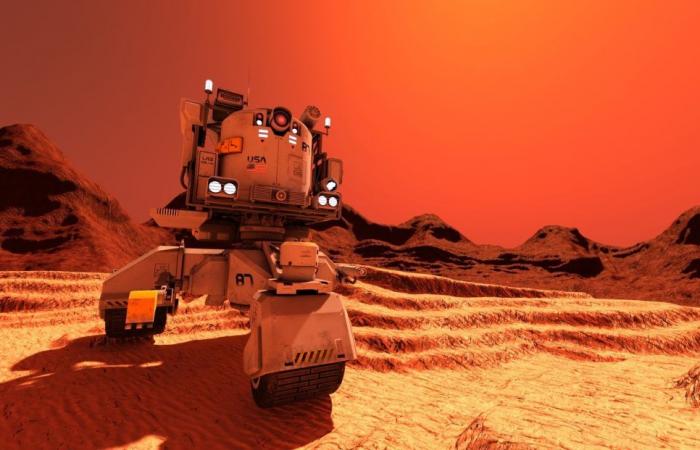A study of an intriguing discovery on Mars highlights new data regarding the origin and evolution of the composition of the Martian crust, opening new research perspectives to better understand the formation of the Red Planet.
Mystery and intrigue combine on Mars as the Perseverance rover discovers an unusual stone during his exploration of an ancient Martian river. This block of light rock could well reveal secrets about the origin and evolution of the Martian cruste. A rare magmatic rock on the surface of the Red Planet raises questions and hypotheses about its origin and its journey through time.
Atoko Point, an intriguing Martian rock
While traveling along the bed of an ancient Martian river, the Perseverance rover made an unexpected discovery, a strange rock nicknamed Atoko Point. In the middle of the dark rocks that litter the landscape, this block of light rock stands out like the nose in the middle of the face. Measuring 45 x 35cmthis rock composed mainly of pyroxenes and of feldspars could be a anorthositean igneous rock formed deep in the Martian crust, (we also speak of rock Plutonic).
The rover’s instruments, SuperCam And Mastcam-Zmade it possible to quickly characterize this intruder, thus offering scientists the opportunity to learn more about the formation of the crust March. This unprecedented discovery could therefore open up new perspectives for understanding the geological history of the red planet.
“Atoko Point could well be the key to unraveling the mysteries of the formation of the Martian crust. This is in fact a first observation of this type of rock on the surface of Marchwhich arouses great interest among the scientific community”, says a member of the team of the assignment Perseverance. It now remains to unravel the mystery of the presence of this magmatic rock at Mount Washburn.
Thousand-year-old Martian rock: an epic journey to discover its deep secrets
Several billion years ago, the rock was carried by the river which fed the crater Jezero on March. Researchers believe that this rock could come from a Ancient intrusion magmatic of the region. However, its isolated position suggests that it was transported a great distance. New analyzes will be carried out to determine its origin precisely.
These results could be crucial in deciding whether to take a sample of this rock with a view to possible repatriation to Earth. There is still much to discover about this mysterious Martian rock block.






